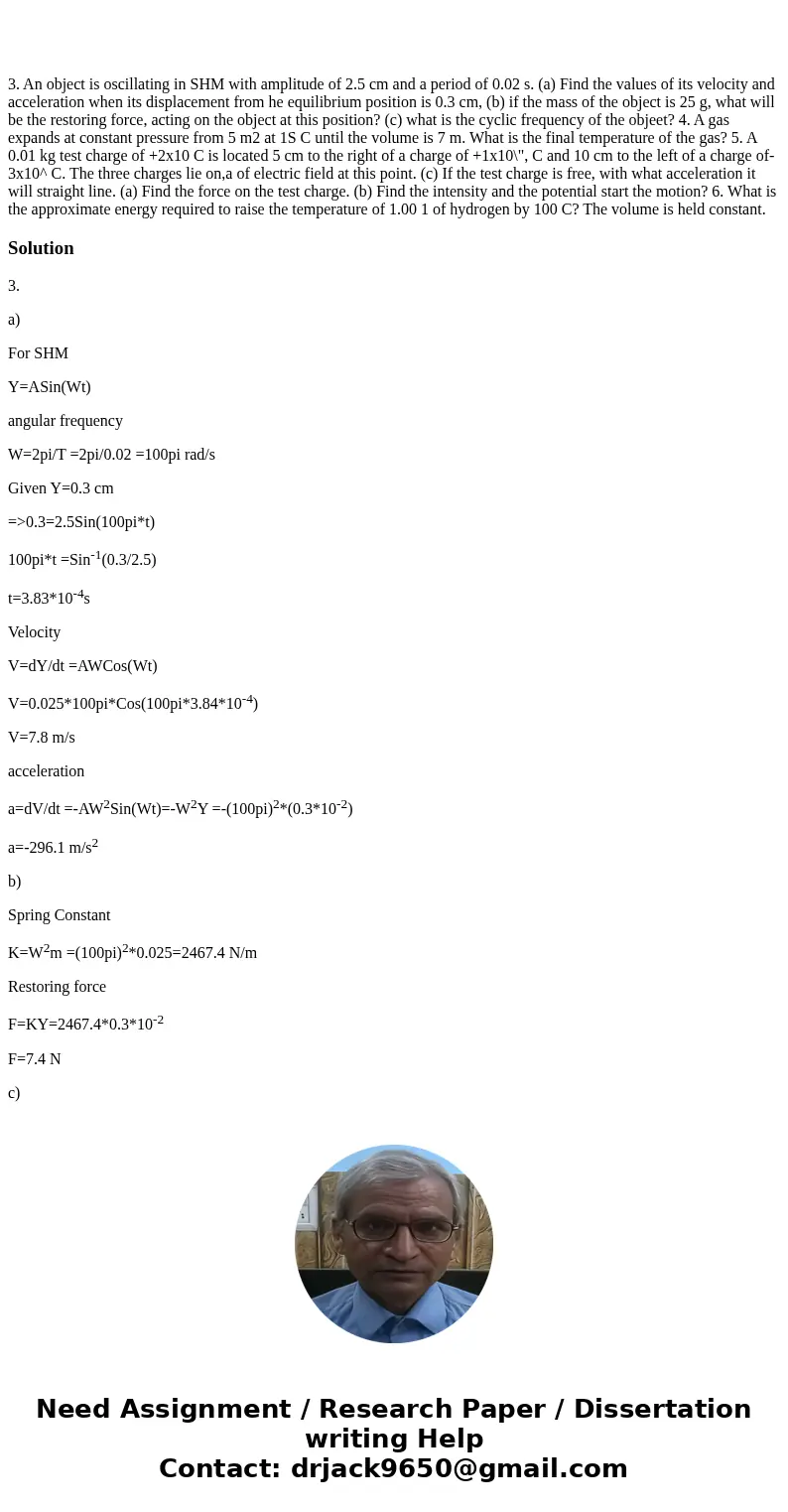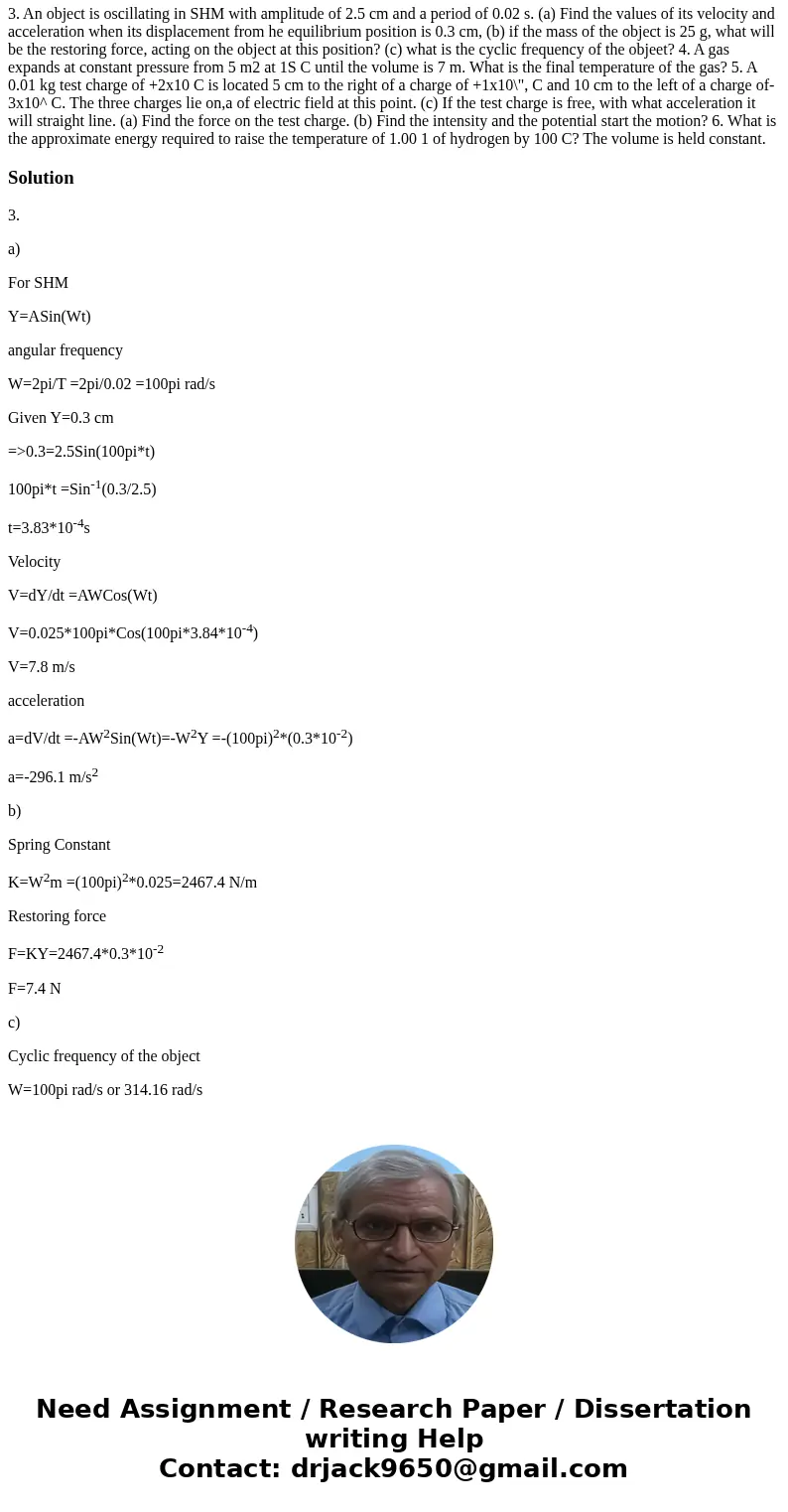3. An object is oscillating in SHM with amplitude of 2.5 cm and a period of 0.02 s. (a) Find the values of its velocity and acceleration when its displacement from he equilibrium position is 0.3 cm, (b) if the mass of the object is 25 g, what will be the restoring force, acting on the object at this position? (c) what is the cyclic frequency of the objeet? 4. A gas expands at constant pressure from 5 m2 at 1S C until the volume is 7 m. What is the final temperature of the gas? 5. A 0.01 kg test charge of +2x10 C is located 5 cm to the right of a charge of +1x10\", C and 10 cm to the left of a charge of-3x10^ C. The three charges lie on,a of electric field at this point. (c) If the test charge is free, with what acceleration it will straight line. (a) Find the force on the test charge. (b) Find the intensity and the potential start the motion? 6. What is the approximate energy required to raise the temperature of 1.00 1 of hydrogen by 100 C? The volume is held constant.
3.
a)
For SHM
Y=ASin(Wt)
angular frequency
W=2pi/T =2pi/0.02 =100pi rad/s
Given Y=0.3 cm
=>0.3=2.5Sin(100pi*t)
100pi*t =Sin-1(0.3/2.5)
t=3.83*10-4s
Velocity
V=dY/dt =AWCos(Wt)
V=0.025*100pi*Cos(100pi*3.84*10-4)
V=7.8 m/s
acceleration
a=dV/dt =-AW2Sin(Wt)=-W2Y =-(100pi)2*(0.3*10-2)
a=-296.1 m/s2
b)
Spring Constant
K=W2m =(100pi)2*0.025=2467.4 N/m
Restoring force
F=KY=2467.4*0.3*10-2
F=7.4 N
c)
Cyclic frequency of the object
W=100pi rad/s or 314.16 rad/s


 Homework Sourse
Homework Sourse